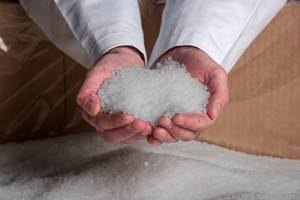Electronics Growth to Slow Down in 2016
Consumers spending less on electronic devices
Electronics production has been well below average for at least the last two years. This is a result of decelerating growth in consumer spending on electronics. With the leading indicators getting ready to peak or slowing down already, electronics production is likely to see even slower growth in 2016.
Real 10-Yr Treasury Rate. The real (inflation-adjusted) 10-yr U.S. Treasury Bond interest rate was 1.85% in January. This was the first time the real rate was below 2% since November. Since the Federal Reserve announced it was raising its overnight rate, the real 10-yr Treasury rate has dropped in each of the last two months. The real 10-yr Treasury rate had increased for 12 months in a row, but in January the real rate fell for the first time since January 2015.
While the real rate increased more slowly, the nominal rate continued to increase at a faster rate. The difference is inflation. The annual rate of inflation, according to the Consumer Price Index, was at its highest level since October 2014 and has doubled since just last month.
Real Disposable Income. January real disposable income was $12.4 billion (seasonally adjusted at an annual rate), an all-time high. In January, real disposable income grew 2.8% compared with a year ago. This was the slowest month-over-month growth in incomes since September 2014, and the third month in a row that income grew less than 3%. All income data for the last six months was revised lower. The annual rate of change fell to 3.3%, the third straight month that it has decelerated. While still above the historical average, it was the slowest rate of annual growth since May 2015.
Real Electronics Spending. Real electronics consumer spending was $394.8 billion (seasonally adjusted at an annual rate) in January. Compared with a year ago, electronics spending in January increased 11.5%. This was the fastest rate of growth since January 2015, when the month-over-month rate of growth was 12.9%. January’s rate of month-over-month growth was still below the historical average. Further, the annual rate of growth decelerated for the fifth month in a row. The current rate of annual growth was notably below the historical average. While the rate of growth may moderate somewhat in upcoming months, the bias is for electronics spending to continue growing at a slower rate.
Electronics Industrial Production. In January, the electronics production index was at its lowest level since July 2015. Compared with one year ago, it increased by just 1.1%. This was well below the historical average month-over month growth of 13.5%. It’s even well below the average month-over-month growth rate since January 2006, which was 5.9%. The annual rate of change was 1.3% in January. The annual growth rate has decelerated since February 2015, and the current rate of growth was the slowest since July 2014. Given the trends in the leading indicators, it is likely that electronics production will continue to decelerate and possibly contract in the upcoming months.
ABOUT THE AUTHOR: KLINE
Steven Kline Jr. is part of the fourth-generation ownership team of Cincinnati-based Gardner Business Media, which is the publisher of Plastics Technology. He is currently the company’s director of market intelligence. Contact: (513) 527-8800 email:skline2@gardnerweb.com
blog: gardnerweb.com/economics/blog
Related Content
‘Monomaterial’ Trend in Packaging and Beyond Will Only Thrive
In terms of sustainability measures, monomaterial structures are already making good headway and will evolve even further.
Read MorePHA Compound Molded into “World’s First” Biodegradable Bottle Closures
Beyond Plastic and partners have created a certified biodegradable PHA compound that can be injection molded into 38-mm closures in a sub 6-second cycle from a multicavity hot runner tool.
Read MoreMultilayer Solutions to Challenges in Blow Molding with PCR
For extrusion blow molders, challenges of price and availability of postconsumer recycled resins can be addressed with a variety of multilayer technologies, which also offer solutions to issues with color, processability, mechanical properties and chemical migration in PCR materials.
Read MoreUS Merchants Makes its Mark in Injection Molding
In less than a decade in injection molding, US Merchants has acquired hundreds of machines spread across facilities in California, Texas, Virginia and Arizona, with even more growth coming.
Read MoreRead Next
People 4.0 – How to Get Buy-In from Your Staff for Industry 4.0 Systems
Implementing a production monitoring system as the foundation of a ‘smart factory’ is about integrating people with new technology as much as it is about integrating machines and computers. Here are tips from a company that has gone through the process.
Read MoreBeyond Prototypes: 8 Ways the Plastics Industry Is Using 3D Printing
Plastics processors are finding applications for 3D printing around the plant and across the supply chain. Here are 8 examples to look for at NPE2024.
Read MoreLead the Conversation, Change the Conversation
Coverage of single-use plastics can be both misleading and demoralizing. Here are 10 tips for changing the perception of the plastics industry at your company and in your community.
Read More
.JPG;width=70;height=70;mode=crop)






















